#julio buchs
Explore tagged Tumblr posts
Text
austral
roman von carlos fonseca
erschienen 2024
im verlag klaus wagenbach
isbn: 978-3-8031-3366-3
(von tobias bruns)
julio ist professor für literatur an einer uni in den usa. vor langer zeit ist er aus costa rica ausgewandert, um ein besseres leben in nordamerika zu führen. er ist nicht gerade glücklich, als er die nachricht bekommt über das schicksal des letzten buches von aliza abravanel zu entscheiden. die bekannte schriftstellerin und julios ex-freundln hatte dies als letzten wunsch. glücklich über diese abwechslung macht er sich auf den weg durch süd- und mittelamerika auf den spuren dieses romans und des lebens der schriftstellerin - beides hängt eng zusammen. die faszination der europäer in all ihren unterschiedlichsten und absurdesten facetten sind teil seiner reise zum beispiel nach nueva germania, einer deutschen, aber völkischen kolonie, die von friedrich nietzsches schwester elisabeth förster-nietzsche gegründet wurde. recht erfolglos und ohne den erhofften anschluss an das bahnnetz paraguays. eine kolonie, in die viele jähre später der vater der verstorbenen autorin kam, um eine indigene sprache zu retten - auch wiederum ohne erfolg...
es wundert nicht ob der reise des protagonisten in den süden des amerikanischen doppelkontinents, das austral ganz einfach "südlich" bedeutet, den dort spielt die geschichte seines schicksals und das der autorin, deren schicksal er folgt. trotzdem der protagonist und der autor selbst aus costa rica stammt, spielen hier die europäischen begehrlichkeiten die hauptrolle. die begehrlichkeit diesen kontinenten nach eigenem willen zu formen, die indigene bevölkerung dabei vollkommen zu missachten. und doch auch wiederum diese zu bewahren, den versuch zu unternehmen eine sprache zu retten - überhaupt die tiefe bedeutung von sprache für den menschen und sein zusammenleben wird hier thematisiert. die gründung nueva germanias durch nietzsches schwester wäre an sich schon ein roman, aber so wie es hier ist, werden so viele wichtige momente thematisiert, die schon für sich genommen ein ganzes buch rechtfertigten und so dann insgesamt alles dann doch recht oberflächlich daherkommt. es ist eine leicht verpasste chance mit so vielen möglichkeiten... auch das spiel mit kunst im fließenden roman ist wunderbar. doch nicht ausgereizt. das spiel mit sprache... klar wird aber diese historische faszination der europäer mit dem kontinenten als bühne verschiedenster lebensuto- oder dystopien....
#austral#carlos fonseca#verlag klaus wagenbach#wagenbach#roman#rezension#philosophenstreik#tobias bruns#argentinien#humahuaca#nueva germana#paraguay
1 note
·
View note
Text
Chavorrucos
Chavorrucos (Serie 2023) #DalilahPolanco #CristianDeLaFuente #JuanSoler #JulioBracho #RodrigoMurray #FreddyOrtega Mehr auf:
Serie / Manchild Jahr: 2023- Genre: Comedy Hauptrollen: Dalilah Polanco, Cristián de la Fuente, Juan Soler, Julio Bracho, Rodrigo Murray, Freddy Ortega … Serienbeschreibung: Regina, eine Psychologin, beschließt, ein Buch über verschiedene Männerpersönlichkeiten zu schreiben. Dafür versammelt sie fünf lustige und sehr ungewöhnliche “Chavorrucos”, die ihre therapeutischen Partner und Freunde…

View On WordPress
0 notes
Link
A Bullet for Sandoval stands out as an unsung gem in the wave of revisionist westerns emerging around 1967. Starring Ernest Borgnine at the height of his gruff powers, this dusty tale of revenge and morality offered a bold counterpoint to the romanticized western myths of decades past. Led by Borgnine's complex anti-hero, A Bullet for Sandoval provides a gripping exploration of violence begetting violence that still resonates today. John Warner ain't Josey WalesA Bullet for Sandoval fell between the cracksFinal thoughts on A Bullet for SandovalA Bullet for Sandoval is available November 7th John Warner ain't Josey Wales Directed by Julio Buchs and co-written by Leo Anchóriz and Buchs, the film centers on John Warner, a confederate soldier who deserts to search for his family following the Civil War. When his wife and son are murdered by a gang of Union soldiers, Warner becomes consumed by revenge under his new alias "Sandoval." Years later, Sandoval runs into one of the culprits who has become a wealthy cattle baron named Don Pedro Simeon. Playing a dangerous game, Sandoval infiltrates Don Pedro's gang posing as an outlaw gun-for-hire. But his schemes for vengeance soon entangle others, including a young widow and an idealistic Mexican revolutionary. Borgnine delivers one of his most complex performances as Sandoval, eliciting both empathy and condemnation for his endless pursuit of retribution. While criticized as "sadistic" by some at the time of release, Borgnine's gravitas elevates Sandoval into an anti-hero grappling with morality. The film pulls few punches in depicting the savage violence of Sandoval's world, but uses it to indict the human lust for vengeance. Co-lead Alberto de Mendoza provides an understated counterpoint as the wealthy Don Pedro, who proves more complicated than he first appears. Veteran actor Leo Anchóriz, who co-wrote the script, also stands out as a former priest tangled up in Sandoval's schemes. Filmed on location in Almería, Spain, the production took advantage of the region's desert landscapes that made it a popular shooting destination for westerns. A Bullet for Sandoval fell between the cracks While overlooked among Spain's flowering genre cinema scene of the era, A Bullet for Sandoval demonstrated how the western could powerfully tackle relevant themes. Sandoval's bitterness reflects the divisions of a post-Civil War America still struggling with open wounds. His blind rage offers a cautionary tale on cycles of violence fueling further conflict. Released in 1969 as the Vietnam War still raged, the film's underlying message warned against using past bloodshed to justify continued fighting. Beyond tackling anti-war sentiments, A Bullet for Sandoval also subverts macho western archetypes with rare feminist perspectives. Don Pedro's young widow Estella, played compellingly by Luciana Paluzzi, openly challenges the limited roles for women in this world. She condemns expectations that she obediently marry whoever inherits her deceased husband's land and wealth. Estella's defiance and resolve in the face of constant danger makes her one of the most progressive female characters found in genre cinema of the time. She emerges as an unlikely moral compass who tries to pull wayward men back from violence. A Bullet for Sandoval ultimately carries a heavy dose of melancholy, with Sandoval forced to confront the fruitlessness of his endless revenge. Final thoughts on A Bullet for Sandoval While overshadowed by Leone and Corbucci's breakthrough works, A Bullet for Sandoval proved Julio Buchs could deliver a distinctly gritty spin on the classic western formula. Borgnine added another memorable anti-hero to his rogues gallery after acclaimed turns in The Wild Bunch and The Dirty Dozen. Over 50 years later, the film's messages warning against hate-fueled violence still ring painfully true. With all the cynicism of a revisionist western but glimmers of humanity, A Bullet for Sandoval warrants rediscovery as a gritty meditation on morality. The VCI Blu-ray comes with the spanish language version of the film. You also get the extended English dialogue sequences and the US trailer. The big winner on the set is the Alex Cox commentary. He's like Scorsese, but for cult films. Pick this one up. A Bullet for Sandoval is available November 7th
1 note
·
View note
Photo

“A Bullet for Sandoval“ AKA Los desesperados by Julio Buchs (1969) Ernest Borgnine in Rambla Alfaro, Tabernas desert #Almeria#Cinema #Western
#a bullet for sandoval#julio buchs#los desesperados#ernest borgnine#Tabernas Desert#Almeria#cinema#western#rambla alfaro
2 notes
·
View notes
Photo

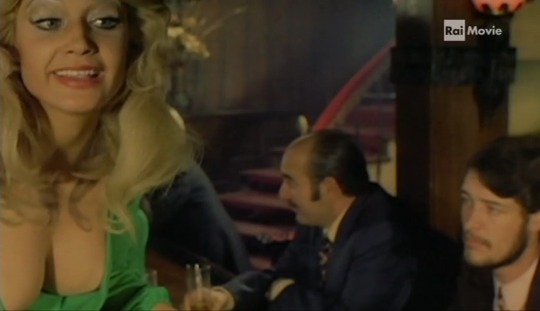

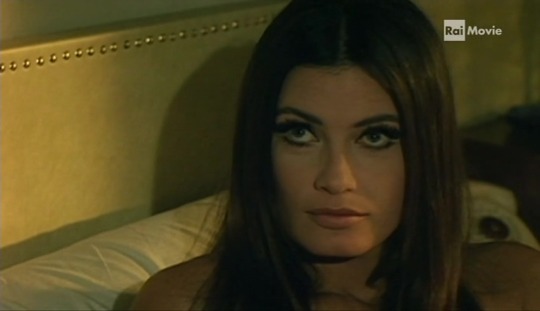
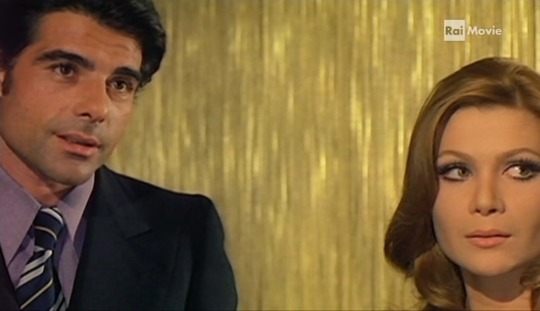
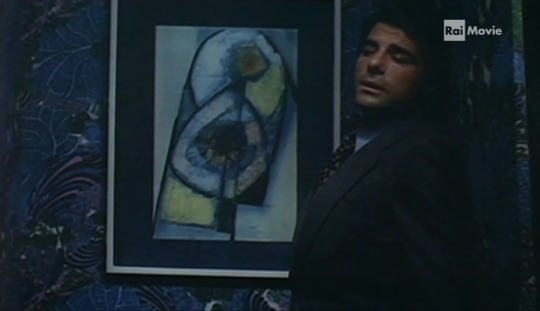
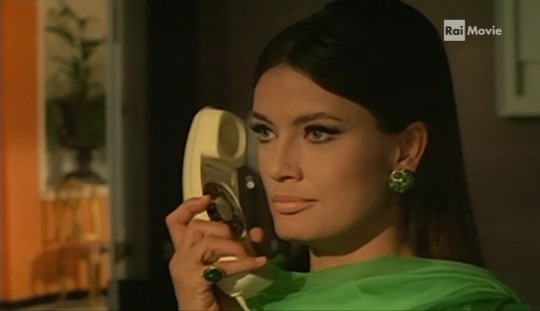
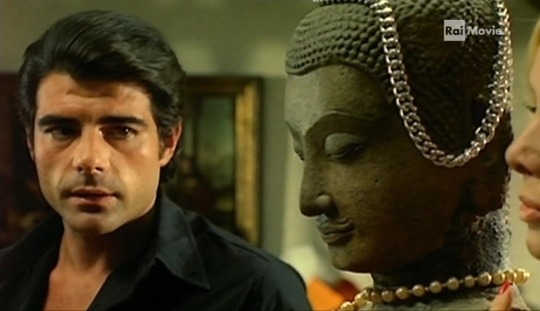


alta tensión / doppia coppia con regina / high voltage (sp/it, buchs 72)
#Doppia coppia con Regina#alta tensión#julio buchs#marisa mell#helga liné#Juan Luis Galiardo#Patrizia Adiutori#Mario Montuori
22 notes
·
View notes
Text


Las trompetas del apocalipsis (1969)
0 notes
Photo

PERVERSION STORY (1969) - LAZY SUNDAY IN BED MOVIE POSTERS (Part 3/20)
A fantastic large 2 panel Italian movie poster painted by Renato Casaro (see Part 9, 12, 14, 15 and 19) for the release of the Spanish Giallo, Las trompetas del apocalipsis also known as Murder By Music.
The image of the pale naked woman gripping the bed sheets has been reused in countless other Italian posters making this poster and image a iconic one.
Director: Julio Buchs Actors: Brett Halsey, Romina Power, Marilu Tolo
All our GIALLO movie posters are here
If you like this entry, check the other 19 parts of this week’s Blog as well as our Blog Archives and all our NEW POSTERS
All our ON SALE posters are here
The poster above courtesy of ILLUSTRACTION GALLERY
#illustraction gallery#illustraction#Perversion story#Murder By Music#Las trompetas del apocalipsis#Romina Power#Marilu Tolo#Julio Buchs#Giallo#Brett Halsey#1969#movies#Movie Poster#Spanish movie#Italian movie poster#Renato casaro#film#vintage#woman in bed
4 notes
·
View notes
Photo

Hace 5 años se me ocurrió contar historias de mi vida en el blog. Siempre en primera persona. Se llamaron #HistoriasDelMicrocentro y tal vez sean libro alguna vez. Aquí les dejo una para acompañar las imágenes. Si desean leerlas todas, el link en las Stories. . . La Bandita del Obelisco. . Eran 10 quizás más. El líder era un gordito de rulos, camiseta de Boca 3 talles más chicos, ojos rasgados. Un Buda Maradoniano de 14 años. Me conocían de vista, algunos por el nombre como era el caso del lider, “Bocha”, los ayudaba como podía y ellos retribuían. Me cuidaban. Regresaba a casa de madrugada, caminando y de lejos me seguían hasta la Avenida Santa Fé donde yo doblaba. Eran mi Guardia Pretoriana. Dormían en el Obelisco. Plaza de la República, lado Norte. Del lado Sur dormían los Punks del Centro. Bravos. Los Pirañas no existían. Un día el “Bocha” me vino a buscar. Tenía un problema. Jugaban contra los de Plaza Lavalle y les faltaba un arquero. Sos viejo (23 años) pero tenés que bancarnos. Fui. Ganamos. Comimos Naranjas. El honor del Obelisco estaba a salvo. La pica con Plaza Lavalle era total. La noche siguiente no vi a ninguno. Así pasó como un mes hasta que apareció una chica que vendía en la calle. Era la hermana del “Bocha”. Me esperó largo rato. Me dijo que le habían contado que el nene estaba en la Morgue Judicial, los amigos borrados y ella era menor. Sola. Parecía que había pasado algo en la madrugada después del partido. La calle es muda, sólo habla cuando quiere. Nadie vió ni escuchó nada. Era un verso urbano, al menos en esa época sin cámaras, que en la calle se sabía todo. Ni los buches de la cana decían qué había pasado. Supe que hubo gresca, que cruzó la 9 de Julio asustado y 1 taxi que venía en el aire lo atropelló. Nunca se supo quién fue, nunca se detuvo. Acompañé a la hermana, era menor, en situación de calle. Me acompañaron nuestros Abogados, era un tema serio y la pibita estaba destrozada. Morgue Judicial. Se me destrozó el corazón, era José Navarro, el “Bocha”. Hicimos los trámites, caminamos, cruzamos Plaza Lavalle. Perdimos. . . 📷: @ferraribsas . #argentina #buenosaires #likebuenosaires #paisajes_argentinos #argentina_illife #feverargentina (en Obelisco de Buenos Aires) https://www.instagram.com/p/Cgh6B4qvfau/?igshid=NGJjMDIxMWI=
#historiasdelmicrocentro#argentina#buenosaires#likebuenosaires#paisajes_argentinos#argentina_illife#feverargentina
14 notes
·
View notes
Text
Mathers y los Jefes Secretos
de Jean-Pascal Ruggiu y Nicolás Tereshchenko.
Extracto de la Introducción histórica del Templo Ahathoor N° 7 de París

Los Mather dejaron Londres en 1892 para establecerse en París, donde vivieron hasta la muerte de S. L. MacGregor Mathers en 1918. Varias razones animaron a Mathers a instalarse en Francia:
En primer lugar, las razones materiales: de hecho, tras una discusión con el padre de Annie Horniman, Mathers había perdido en 1891 su puesto como conservador del Museo Horniman y, en consecuencia, su casa en Stent Lodge, Forest Hill.
En segundo lugar, las razones personales y familiares: Moïna deseaba continuar su carrera artística en París y reunirse con su hermano, el doctor en filosofía Henri Bergson, de quien tal vez esperaba cierta ayuda.
En tercer lugar, las razones económicas: como especifica Moïna en una de sus cartas, la vida en París era menos cara que en Londres en aquella época.
En cuarto lugar, las razones esotéricas: París era en aquella hermosa época la capital del Ocultismo. Moïna además de eso declaró que su esposo había recibido órdenes de sus Maestros para trasladar sus actividades ocultas a París (prólogo a la cuarta edición de "The Kabbalah Unveiled" de SLMathers, julio de 1926). Este último punto plantea obviamente el problema de la identidad de los famosos "Jefes Secretos de la Tercera Orden" a los que Mathers se refería constantemente.
En el momento de un primer viaje a París en julio de 1891, Mathers le escribió a Westcott que "había estado en contacto con Frater Lux Ex Tenebris y otros Jefes (secretos)". Mathers siempre afirmó que había recibido Lecciones y Rituales de una de las Órdenes Internas de Rosae Rubeae et Aureae Crucis en Francia en el otoño de 1891, en nombre de un Miembro a quien designó bajo el título de Frater Lux Ex Tenebris. Alrededor de 1900, los miembros de la G.D. creían que este famoso Frater Lux Ex Tenebris era un tal Dr. Thiessen, un belga que vivía en Lieja y era un miembro de alto grado de la Orden Martinista.
Según nuestra investigación, es posible que el Dr. Thiessen haya sido descendiente de Antoine Thys, un teólogo de Amberes que habría sido miembro del Capítulo Rosacruz de Cassel, fundado por el conde Maurice de Hesse-Cassel en 1615, al menos si uno cree en el trabajo del historiador belga Charles Rahlenbeck. Este trabajo fue presentado en el momento de la Conferencia Internacional de Masones Rose+Croix en Bruselas en 1888. Sin embargo, Mathers y Westcott, en su calidad de masones y miembros de alto grado de Societas Rosicruciana In Anglia, conocerían el trabajo de esta famosa Conferencia Internacional de la Rosa+Cruz que, curiosamente, tuvo lugar en 1888, fecha de la fundación no sólo de la G.D., sino también de la Orden Martinista y la Orden Cabalística de la Rosa+Cruz en Francia. Esta fecha de 1888 ciertamente no fue elegida por casualidad.
Aunque muchos autores han cuestionado las afirmaciones de Mathers sobre sus contactos con los famosos Jefes Secretos de la Tercera Orden, descubrimos la prueba de que había recibido una transmisión iniciática proveniente de la Rosa+Cruz Áurea. En efecto, cierto número de rituales del R.R. et A.C. (como por ejemplo el Ritual de la Cruz Cabalística, el Ritual del Pilar Medio y los Rituales de Consagración de las Armas Mágicas del Adeptus Minor) toman como punto de partida un documento extremadamente secreto de la Rosa+Cruz Áurea: se trata de un comentario esotérico del VIIème Livre de Moïse que difiere completamente de los que han sido publicados hasta ahora. Este documento se titula "Das VII Buch Mosis" (Wittenberg, 1505).
Aunque esta versión secreta del VIIème Livre de Moïse se remonta a 1505, ciertamente fue alterada alrededor de 1785 por los Hermanos Asiáticos, porque obviamente estaba influenciada por la Escuela Cabalística de Shabattaï Zevi. En efecto, la Fraternidad de los Hermanos Asiáticos tenía la característica de ser la rama Cabalística de la Rosa+Cruz de Alemania, porque aceptaba entre sus miembros judíos que estaban adscritos a la Escuela Cabalística Polaca de Shabattaï Zévi.

A diferencia de lo que muchos historiadores han creído hasta ahora, descubrimos la prueba de que los Hermanos Asiáticos no desaparecieron alrededor de 1800, sino que sobrevivieron dentro de la Orden Masónica de l'Aurore Naissante ("el Amanecer Naciente") en Frankfurt-am-Main, una Logia que fue reconocida por la Gran Logia de Inglaterra en 1817. Kenneth MacKenzie (escritor de los Cipher Manuscripts of the G.D.) ciertamente sabía de la existencia de la Orden l'Aurore Naissante ya que afirmó haber sido iniciado en su juventud en la Rosa+Cruz en Viena, Austria, en el séquito del Conde Apponyi quien era embajador de Austria en París. Viena había sido durante mucho tiempo la sede de la Fraternidad de la Rosa+Cruz de Austria; pero en la época en que MacKenzie vivía en Viena, alrededor de 1840, la única rama de la Orden Rosacruz que había sobrevivido era la de los Hermanos Asiáticos que habían encontrado refugio en el centro de la Orden Masónica de l'Aurore Naissante en Frankfurt. Además, es en esta ciudad donde se llevó a cabo la Reforma de los grados y rituales de la Orden Rosa+Cruz del Antiguo Sistema en 1777.
MacKenzie tomó como punto de partida las lecciones cabalísticas de los hermanos asiáticos para crear los rituales de la G.D. En efecto, existen muchos puntos en común entre el sistema cabalístico de la G.D., el de los Hermanos Asiáticos, y el indicado en el VIIème Livre de Moïse. Como estos rituales siempre han sido secretos y que solo pueden obtenerse por transmisión iniciática junto con la autorización de la Orden Interna de la Rosa+Cruz, aun en la actualidad, estimamos que eso constituye la prueba formal de que Mathers había recibido esta transmisión. Sabemos que también tenía manuscritos alquímicos provenientes de la Rosa+Cruz alemana, ya que tenemos una copia de estos documentos transcritos y traducidos de su puño y letra (por ejemplo "Sigillum Secretorum Magnalia Dei Optimi Maximi"). No es del todo imposible que haya recibido la comunicación del comentario cabalístico secreto del VIIème Livre de Moïse en nombre de un miembro de la Orden Martinista, porque los Jefes de l'Aurore Naissante (todos miembros de Synédrion of the Asiatic Brethren) como Hirschfeld y Joseph Molitor estuvieron en contacto con la primera generación martinista, como Louis Claude de Saint Martin y Rodolphe de Salzmann en Estrasburgo por intermediación de la Orden del Rito Escocés Rectificado.
En definitiva, lo que sabemos de manera incuestionable es que los documentos y los rituales de una de las Órdenes Internas de Rosae Rubeae et Aureae Crucis procedían principalmente de documentos muy secretos del grado de Magister Templi de la Fraternidad Alemana de Rosa+Cruz. Tenemos la prueba de esta afirmación; sin embargo, dado el carácter extremadamente secreto de estos documentos (que nos fueron comunicados bajo el sello del juramento por el Colegio Interior de Rosa+Cruz), no podemos publicarlos. Sin embargo, tenemos la autorización para comunicarlos (bajo nuestra responsabilidad) a los miembros del Grado de Adeptus Exemptus 7°= 4° del R.R. et A.C.
Mathers también afirmó que uno de sus Maestros Secretos era un iniciado francés, de origen escocés, vivo en París, a quien señaló bajo el título místico de "Frater Lux Ex Septentriones". Este iniciado estuvo quizás relacionado con la familia Stuart, de la que todavía hay descendencia en Francia. Además, Mathers pertenecía a una sociedad jacobita secreta llamada "La Sociedad de la Rosa Blanca".
Conozca más: AuroraDorada.org
3 notes
·
View notes
Text
kapitulation
roman von ray loriga
erschienen 2022
im culturbooks verlag
isbn: 978-3-95988-155-5
(von tobas bruns)
seit jahren herrscht krieg in diesem land. die söhne sind wohl an der front und kämpfen. doch für was? es ist nicht klar, warum dieser krieg überhaupt begann und worum es überhaupt geht... doch im moment geht es ums überleben. informationen über den verlauf des krieges gibt es nur vom hörensagen und das hörensagen ist nicht mehr vorhanden... hörensagen ist auch gefährlich in diesem land. das leben geht so vor sich hin in diesem krieg, doch dann kommt der ortsvorsteher und verkündet allen bewohnern, dass sie zu ihrer sicherheit evakuiert werden. evakuiert in die neue durchsichtige stadt! eine stadt wie sie es noch nie und nirgendwo gab. schon die reise in diese neue stadt ist abenteuerlich, doch was dem erzähler, seiner frau und dem theoretischen adoptivsohn hier begegnet ist unglaublich: alle leben unter einer glaskuppel und alle können sich jederzeit überall und ohne probleme sehen. es ist eine stadt aus glas. der nachbar duscht sich und man kann zusehen. intimität gleich null. und doch, es ist fast wie ein traum. man muss zwar arbeiten, aber alles, was man braucht wird einem gegeben. es gibt und braucht keine geschäfte aus eben diesem grund. in kneipen läuft das bier umsonst und zuhause wird alles geliefert was man braucht. fast wie im traum, doch mit ihrem stummen theoretischem adotivsohn julio zieht die familie des erzählers die aufmerksamkeit auf sich. er ist ein ausnahmekind, was die intelligenz angehr, obwohl er nicht spricht....
krieg...flucht vor einem drama ohnegleichen... und kapitulation ist das ende des ganzen... doch wie ist kapitulation gemeint? persönlich? national oder überall komplett?
ray loriga legt hier einen roman vor, der auf eine sehr ungewöhnliche weise die leiden des krieges vor augen führt. hautnah ist man durch die ich-erzählung dabei und doch ist es fremd - gleichermaßen aufregend. was passiert hier überhaupt? denn ehrlich gesagt geht es nicht einmal um den krieg an sich, es geht in der durchsichtigen stadt um die absolute überwachung und kontrolle und ganz im gegensatz zu totalitären systemen oder anderen diktaturen, nimmt ray loriga noch einen weiteren schritt. alles was in der durchsichtigen stadt passiert ist für alle bewohner sichtbar! sex, duschen, popeln... alles wird gesehen! nur gehört wird nicht - zumindest nicht die gespräche! sehr spannend, sehr ungewöhnlich! wunderbar erzählt.
ein wirklich geniales buch mit absurder dystopie und genau deshalb sowas von lesenswert!!!!
#kapitulation#ray loriga#culturbooks#culturbooks verlag#roman#rezension#philosophenstreik#tobias bruns#literatur#kritik#dystopie#lesenmachtglücklich#lesen
0 notes
Photo






April 16, 2020: King Felipe chaired the meeting of the Operational Coordination Center of the Security Forces and Bodies (CECOR-COVID 19), the main coordination body between police forces in the framework of the state of alarm, held in the headquarters of the Ministry of the Interior. The purpose of this body is to guarantee unity of action between the different bodies in the application of the measures adopted to contain the spread of the coronavirus and protect the health and safety of the Spanish people. He praised the coordination of the Security Corps, regional and local police in the fight against COVID-19.
Before the start of the meeting, Felipe wanted to share “the pain and sadness with so many thousands of families who have lost one of their members, friends or colleagues. And especially because they have not been able to accompany them, watch over and dismiss them in the way they would have liked due to the risks of contagion ”and has paid a heartfelt tribute to the“ comrades who have died ”during the fight against the COVID-19 pandemic.
Felipe also conveyed a congratulatory message "because in these difficult and complex circumstances, the collaboration and coordination between our State Security Corps, Autonomous and Local Police is exemplary." Likewise, on behalf of all citizens, he thanked them for their work “because all these days you are helping others to overcome this crisis, facing very delicate situations. And you do it with the values that characterize you: with dedication, a sense of duty, sacrifice and a spirit of service… and humanity ”.
Before finalizing his words, Don Felipe wished a speedy recovery to those who suffer from the effects of the virus "who, with the help and tireless, self-sacrificing and exemplary work of our health community and of so many who attend to the enormous social needs, will be every day closer ”.
During the videoconference, the state of the situation of the available operational capacities has been exposed, as well as the latest developments in relation to the provisions and actions contemplated in the regulatory regulations for the declaration of the state of alarm, on the implementation of border controls. and last actions of support and coordination with Defense.
The meeting was joined, from different locations, by the director general of the Police, Francisco Pardo; the general director of the Civil Guard, María Gámez; the general director of Traffic, Pere Navarro; the general director of Civil Protection and Emergencies, Leonardo Marcos; the director of the Cabinet of Coordination and Studies, José Antonio Rodríguez; the deputy director of the National Police, José Ángel González; and the deputy director of the Civil Guard, Laurentino Ceña.
Likewise, the director of the Technical Cabinet of the Defense Minister, Amador Enseñat; the secretary of Transport, Mobility and Urban Agenda, Jesús Manuel Gómez; and the general secretary of the Spanish Federation of Municipalities and Provinces, Carlos Daniel Casares.
On the part of the autonomous communities with their own police forces, the Basque Country Minister of Security, Estefanía Beltrán de Heredia; the Minister of the Interior of the Generalitat of Catalonia, Miquel Buch; the vice president and counselor of the Presidency, Equality, Public Function and Interior of the Autonomous Community of Navarra, Javier Remírez; the Minister of Public Administrations, Justice and Security of the Canary Islands Government, Julio Manuel Pérez; as well as the directors of the different autonomous security forces, the head of the Ertzaintza, the head of the Mossos d'Esquadra, the head of the Navarra Provincial Police and the head of the Canary Police.
At the indication of the King, the Security Service of His Majesty the King's House intervenes in the operations determined by the ministry.
This has been the 53rd meeting of the Operational Coordination Center since the declaration of the state of alarm on March 14. This body was created by virtue of an order of the Minister of the Interior to fulfill the specific tasks of coordination of the Security Forces and Bodies for the protection of the health and safety of citizens entrusted to it by the Royal Decree of the State of Alarm.
#King Felipe#King Felipe of Spain#King Felipe VI#King Felipe VI of Spain#Official Event#COVID-19#April 2020
1 note
·
View note
Photo
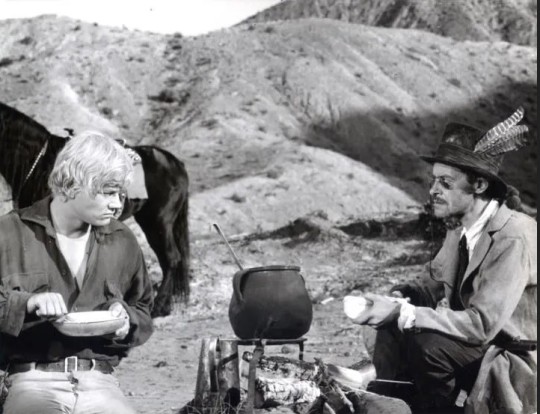
“El hombre que mató a Billy el Niño” AKA I’ll Kill Him and Return Alone by Julio Buchs (1967) Peter Lee Lawrence and Paco Sanz having a picnic in Tabernas desert
#el hombre que mato a billy el nino#julio buchs#peter lee lawrence#Almeria#cinema#western#Tabernas Desert#paco sanz
3 notes
·
View notes
Photo
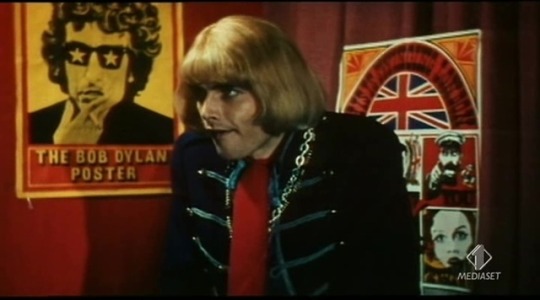




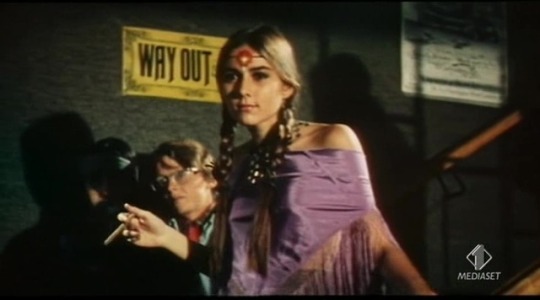




las trompetas del apocalipsis / murder by music / perversion story (sp/it, buchs 69)
#las trompetas del apocalipsis#the trumpets of the apocalypse#murder by music#perversion story#julio buchs#romina power#marilu tolo#fabrizio moroni#manuel rojas#manuel de blas
15 notes
·
View notes
Text
my 2020 dissertation reading list (NOT including comps books yikes), some books i am hoping to get read before i go to the field.
The Urban Underground Inside the Cuban Revolution, Julia Sweig Aldabonazo! Armando Hart Insurrection and Revolution: Armed Struggle in Cuba 1952-1959, Gladys Marel Garcia Perez
Spanish Language La Resistencia Civica en la Guerra de liberacion de Cuba, Jose Maria Cuesta Braniella (Editorial de Ciencias Sociales, 1997) La Lucha en Las Villas, Julio Chaviano (Editorial de Ciencias Sociales, 1990). Semillas de Fuego vol 1&2: Compilacion Sobre la Lucha Clandestina en la Capital, Dolores Nieves (Editorial de Ciencias Sociales, 1989, 1990) Gente del Llano, Enrique Oltuski La Lucha Estudiantil Contra Batista, Jose Antonio Echeverria Combatientes de la clandestinidad. Ezel Dominguez Lucha Clandestina del Movimiento 26 de Julio en Jiguani, Sergio Frometa Suarez Diario de la Guerra 1956-1957, Pedro Alvarez Tabio Mas Alla de los Codigos, Luis Buch Bajando del Escambray, Enrique Rodriguez Lopez La Sierra y El Llano, Edmundo Desnoes
Spanish Language Publications Bohemia Periodico Revolucionario Prensa Libre Bulletin de la Junta de Liberacion Cubana Carta Semanal El Cubano Libre Resistencia Civica Revolucion Vanguardia Obrera
Insurrectionary Period Revolution Within the Revolution, Michelle Chase Women and the Cuban Insurrection, Lorraine Bayard de Volo The Cuban Insurrection 1952-1959, Ramon Bonachea and Marta San Martin Castroism: Theory and Praxtice, Theodore Draper. Dynamics of the Cuban Revolution, Joseph Hansen. A Hidden History of the Cuban Revolution, Steve Cushion. Castro and the Cuban Labor Movement, Efren Cordoba Financing Castro’s Revolution 1956-1958, Alfred Padula The Cuban Revolutionary War 1953-1958, Louis A. Perez Jr Revolutionary Politics and the Cuban Working Class, Maurice Zeitlin
Theory On Disobedience, Erich Fromm The Making of the English Working Class, E.P. Thompson Urban Social Movements in the Third World, Frans Schurrman Weapons of the Weak, James C. Scott Social Theory and the Urban Question, Peter Saunders Everyday forms of Resistance, Stavis Kalivas Gentlemanly Terrorists, Derba Ghosh The Urban Question by Manuel Castells Peasant Wars of the 20th Century by Eric Wolf On Collective Memory, by Maurice Halbwachs Life as Politics by Asef Bayat The Sociology of Terrorism by Stephen Vertigans The Social Movements Reader, Jeff Goodwin
Misc A Guide to Cuban Collections in the United States, Louis A. Perez Jr On Becoming Cuban: Identity, Nationality, and Culture, Louis A. Perez Jr. The Structure of Cuban History: Meanings and Purpose of the Past, Louis A. Perez Jr. American State Department documents The Cuban Rebellion: Internal Organization and Strategy 1952-1959 Nelson P. Valdes (University of New Mexico Dissertation 1978)
4 notes
·
View notes
Text
Fauna e flora del fiume – Julio Cortázar
Questo fiume nasce dal cielo e si dispone a durare, tira le lenzuola fino al collo, e dorme davanti a noi che andiamo e veniamo. Il Río de la Plata è questo che di giorno ci inzuppa di vento e gelatina, ed è la rinuncia del levante, perché il mondo finisce con i lampioni del lungomare.
Non discutere oltre, leggi queste cose possibilmente al bar, cielo di monete, rifugiato dal fuori, dall’altro giorno feriale, circondato dai sogni, dalla bava del fiume. Non rimane quasi nulla; sì, l’amore che si vergogna ed entra nelle buche delle lettere per piangere, o che va
solo da un angolo all’altro (ma lo vedono lo stesso), conservando i suoi oggetti dolci, le sue foto e catenelle e fazzolettini, conservandoli nella regione della vergogna, la zona della tasca in cui una piccola notte mormora fra peluzzi e monete.
Per alcuni è tutto uguale, ma io non amo il Racing, non mi piace l’aspirina, risento del giro dei giorni, mi disfo in attese, a volle impreco, e mi dicono che ti succede amico mio, è il vento del nord, cazzo.
(Julio Cortázar)
4 notes
·
View notes
Text
Vorlesen, Schreiben
Heute Abend lese ich vor Fremden aus einem Buch vor. Darin kommen viele argentinische und brasilianische Straßen- und Ortsnamen vor. Wie spricht man »Avenida 9 de Julio« aus oder »Calle Florida«? Spanisch, klar, aber argentinisches Spanisch, nicht spanisches. Ich habe es mir von David vormachen lassen. Dann beim Üben meine Stimme aufgezeichnet. Klingt okay. Ich höre mich älter an, als wenn ich normal rede. Joachim findet ja auch, dass ich mich hier im Tagebuch älter anhöre als normal. Vielleicht hat es etwas mit Ordnung zu tun. Oder mit Konzentration.
4 notes
·
View notes